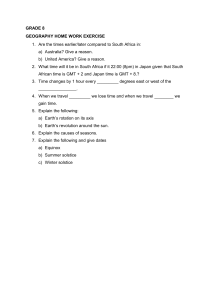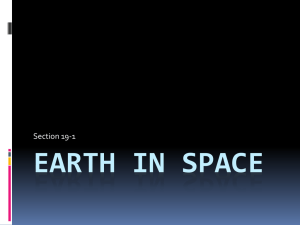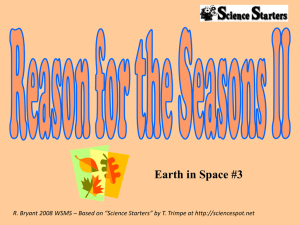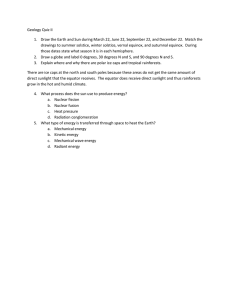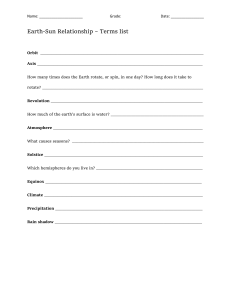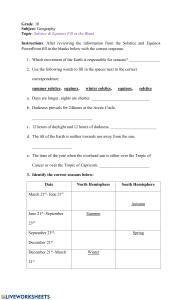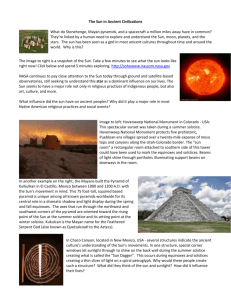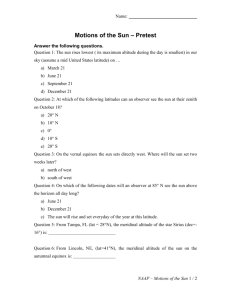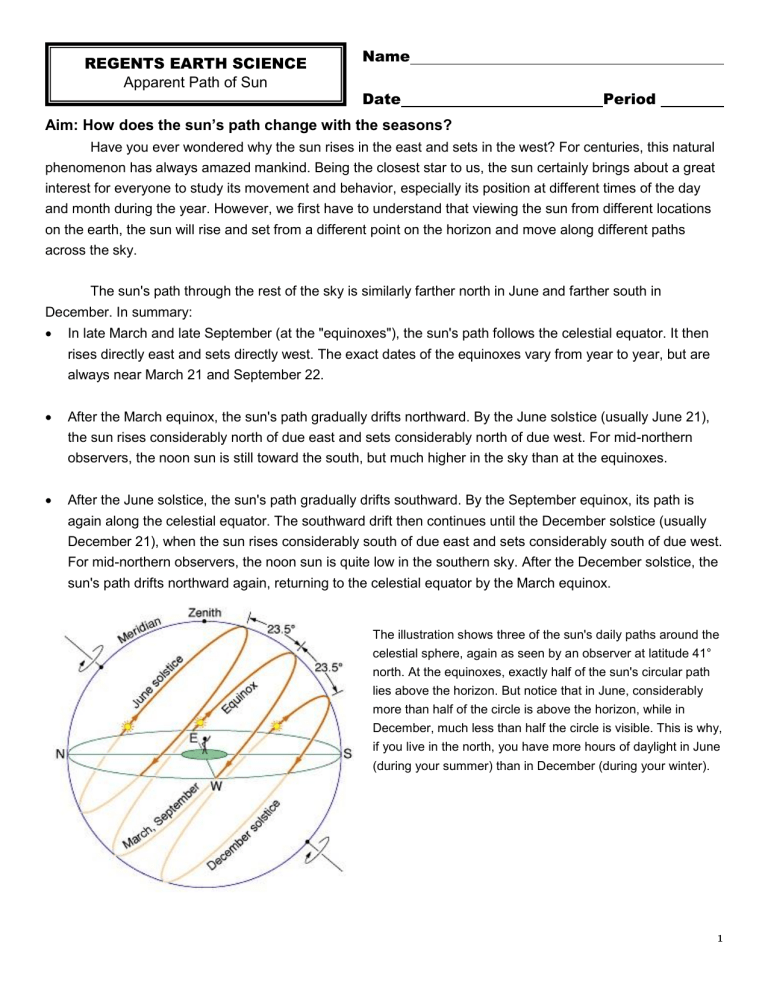
REGENTS EARTH SCIENCE Apparent Path of Sun Name Date Period Aim: How does the sun’s path change with the seasons? Have you ever wondered why the sun rises in the east and sets in the west? For centuries, this natural phenomenon has always amazed mankind. Being the closest star to us, the sun certainly brings about a great interest for everyone to study its movement and behavior, especially its position at different times of the day and month during the year. However, we first have to understand that viewing the sun from different locations on the earth, the sun will rise and set from a different point on the horizon and move along different paths across the sky. The sun's path through the rest of the sky is similarly farther north in June and farther south in December. In summary: In late March and late September (at the "equinoxes"), the sun's path follows the celestial equator. It then rises directly east and sets directly west. The exact dates of the equinoxes vary from year to year, but are always near March 21 and September 22. After the March equinox, the sun's path gradually drifts northward. By the June solstice (usually June 21), the sun rises considerably north of due east and sets considerably north of due west. For mid-northern observers, the noon sun is still toward the south, but much higher in the sky than at the equinoxes. After the June solstice, the sun's path gradually drifts southward. By the September equinox, its path is again along the celestial equator. The southward drift then continues until the December solstice (usually December 21), when the sun rises considerably south of due east and sets considerably south of due west. For mid-northern observers, the noon sun is quite low in the southern sky. After the December solstice, the sun's path drifts northward again, returning to the celestial equator by the March equinox. The illustration shows three of the sun's daily paths around the celestial sphere, again as seen by an observer at latitude 41° north. At the equinoxes, exactly half of the sun's circular path lies above the horizon. But notice that in June, considerably more than half of the circle is above the horizon, while in December, much less than half the circle is visible. This is why, if you live in the north, you have more hours of daylight in June (during your summer) than in December (during your winter). 1 Questions: Answer the following questions based on diagram below. This diagram shows sun’s path in New York State at latitude 41° north during different seasons. 1) Giving specific directions (East, West, North, South, North of East, etc.), where does the sun rise and set on the equinoxes (first day of spring and fall)? 2) Where does the sun rise and set on summer solstice? 3) Where does the sun rise and set on winter solstice? 4) Which sun’s path is the longest? What does it tell you about hours of daylight? 5) Which sun’s path is the shortest? What does it tell you about hours of daylight? 6) If your latitude is 41° north, what is the angle (in degrees) between the noon sun and your southern horizon at Spring or Fall equinox? 2
